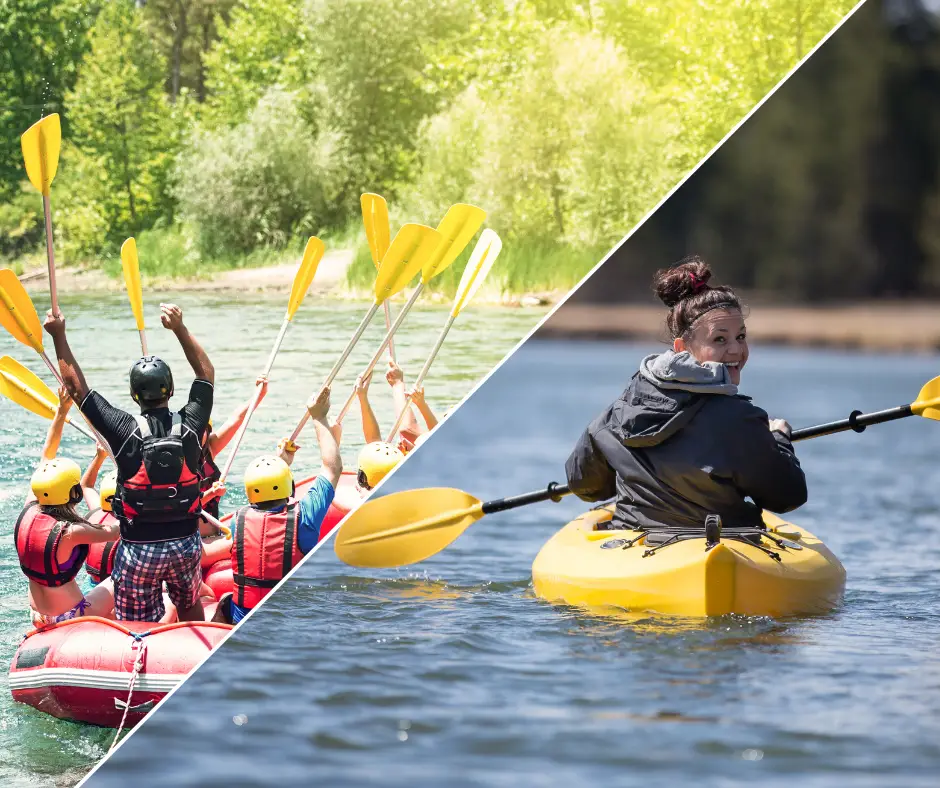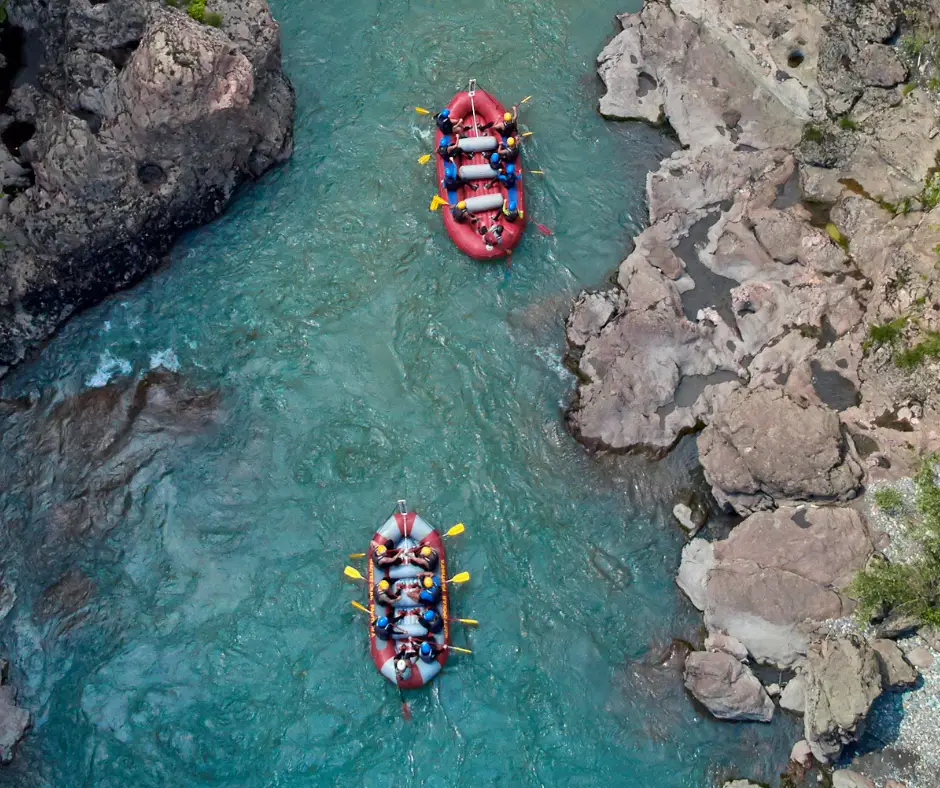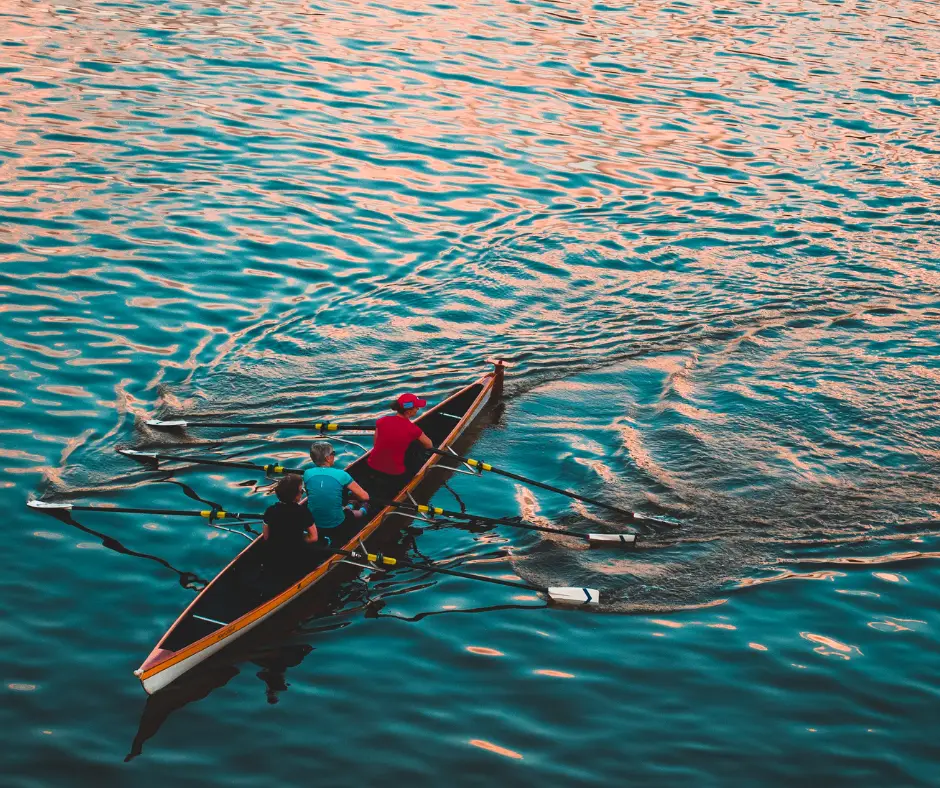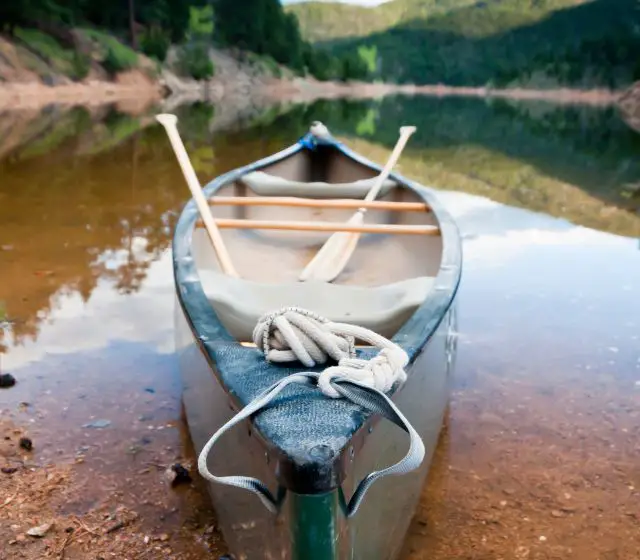It has never been out of the ordinary to see different boats in the same water body. However, one of the long-standing debates we would be looking at is the canoe versus the raft.
Many people have wondered what difference there is between the two vessels. The difference in the cost of a canoe versus the raft, the advantages, and disadvantages of one over the other, and which is better overall.
Indeed, there are a lot of things to learn about these two different boats, hence the focus of this article.
You will learn the uses and construction of these boats, as well as their costs, pros, and cons. As such, this article will aid your choice of getting either a canoe or a raft.
Table of Contents
Canoe vs Raft: Three Basic Differences
There are a few key differences between canoes and rafts that you should be aware of before heading out onto the water.
For one, canoes are typically much narrower than rafts, which makes them more maneuverable but also less stable.
This is why canoes are often used in whitewater rapids, where quick turns and flips are common. Rafts, on the other hand, are much wider and more stable, making them better suited for calm waters.
Another difference between canoes and rafts is that canoes are paddled from a seated position, while rafts are typically paddled standing up.
This gives rafters a better view of the water ahead and makes it easier to navigate around obstacles.
Finally, rafts can typically accommodate more people than canoes, making them better suited for group outings.
Differences between a canoe and a raft, in general, are established under three main key points; uses, construction, and cost.

About Uses: A canoe is suitable for fishing, camping, and river use while raft is suited for river running and recreation.
About Construction: Canoes and rafts have different hull designs, different uses, and diverse handling methods.
About Cost: The cost of rafts range from $500 to $5,000, depending on the size or the material used. The cost of a canoe ranges from several hundred dollars to about $3,000 for a larger one with high quality.
Uses
A canoe is a narrow-water vessel that is lightweight, narrow at both ends, open on top, and is usually propelled through paddling by an individual or more than one individual seated or kneeling.
Canoes are built to be adventure vessels and suitable for fishing. They are popularly used for competition as well as pleasure. Canoes are also good for hunting.
Canoes are usually constructed to accommodate one to two people.
A raft is an inflatable floating vessel made of buoyant materials and is used for transport or support on the water.
Rafting is used for river running; navigating fast-flowing rivers, especially during leisure.
It is commonly used as a means of recreation during boat camping and day trips on the river.
Rafting allows for propelling with a single-blade paddle just like a canoe. Rafting is suitable for taking leisure in a group as it is more common seeing a group of people river rafting than just an individual.
Intex Mariner Inflatable Boat Set Series
Construction
Canoes are typically narrower and more agile than rafts, making them better suited for use in smaller streams and rivers. Rafts, on the other hand, are wider and more stable, making them better suited for use in larger bodies of water.
Canoes are also typically paddled solo, while rafts are designed to be paddled by two or more people. Finally, canoes are often made out of lighter materials than rafts, making them easier to transport and maneuver.
Rafts

Modern rafts are commonly made from Urethane, Hypalon, and PVC.
Urethane is the most sturdy material used in raft construction.
With the features and durability of Urethane, a raft made from this will effortlessly slip over objects that are submerged as well as withstand serious abuse when it is balanced off boulders.
Although, one regrettable thing about Urethane is the expensiveness, as well as its difficulty to roll and hardness to field repair.
Hypalon is another tough material used in the construction of rafts and its toughness allows rafts made from it to roll easily and withstand damage.
Rafts made from Hypalon are not difficult to roll and its repair in the field comes with ease even when damage occurs while out on water bodies.
Hypalon as a material for rafts is durable and long-lasting although expensive.
Instead of being welded, rafts made from Hypalon are glued together. Unfortunately, this glue weakens over time and slowly loses its integrity.
This material is more resistant to abrasion as well as a puncture in comparison to PVC and less resistant to abrasion in comparison to rafts made from Urethane.
PVC as a material for building rafts is inexpensive and is found on various cheap recreational rafts.
This material can not feature in the composition of whitewater rafts because of its inability to withstand the rigorous conditions a typical whitewater raft undergoes.
Canoe
Canoes are made from a range of materials which include; wood, aluminum, plastic, kevlar, and fiberglass.
Wooden canoes are awesome sights to behold so if you intend to travel in style, a wooden canoe is suitable. The heavyweight of wooden canoes makes them unsuitable for carrying supplies in their quantities over land.
Wooden canoes lack speed as they could be slow on water and a lot of maintenance is required to prevent the wood from rotting.

Aluminum’s toughness and durability are considered before making canoes from them. However, a dent on the canoe which eventually happens during river running never allows the aluminum to return to its original shape.
In the case of more serious damage, an expert or a specialist in welding is required to get it repaired.
Heavyweight and slow aluminum canoes could also be noisy, as they increase the sound of every water slap.
Aluminum canoes are also good at mimicking the temperature around them making them cold and hot to touch during winter and summer respectively.
Aluminum canoes are not good recommendations for navigating very shallow waters as they stick to rocks instead of sliding over them.
Polyethene is a form of durable plastic. Canoes made from this material are often tough, cheap, heavy, and slow.
The impact-resistant feature of polyethylene canoes allows for easy slipping over rocks without getting stuck.
Not very much is needed when it comes to the maintenance of polyethylene canoes but the damage is possible on exposure to prolonged ultraviolet rays from the sun.
Fiberglass canoes are distinguished by their speed and efficiency. Its stiffness is responsible for the sharp entry and kit lines of the canoe which makes provision for high speed and superior handling.

Kevlar is the newest material introduced to the world of canoe construction materials. Despite being tough and extremely durable, it is lighter than fiberglass by about 25%.
On a scale of one to ten, a kevlar-oriented canoe is nine times more superior than its closest rival. However, the cost of kevlar is responsible for the expensiveness of kevlar canoes as well as their repair if they get damaged.
Cost
In terms of affordability, the whitewater rafts are fairly affordable. Rafts not capable of riding rapidly are very cheap.
Mass production, cheaper manufacturing materials, as well as the production systems that have been made easier and are being employed during the production of these rafts.
After construction, a modern whitewater raft will range from $500 to $5,000 which is dependent on size, the materials used, as well as the build quality.
Canoe also as cheap as the modern rafts with purchase costs at several hundred dollars for a small-sized canoe, reaching prices of about $3,000 for a large-sized canoe with high quality.
Canoe prices are also dependent on usage and an example is the firefighter canoe which is more expensive as it is majorly purchased for commercial use.
Canoe Vs Raft – Which is better?
Which of these vessels is better? The canoe or the raft? Why is it the canoe or why is it the raft? The answers to these may as well be dependent on the factors influencing your choice.
Canoes and rafts are different and at the same time are better than each other in their respective areas of use.
The choice of which is better depends on your purpose, the type of equipment you will be using, and the river you wish to take them on.
Current terrain and conditions need to be put into consideration in the choice of either of these vessels.
You should go on a raft when you want to go on a river trip as a group or with many people. Contrarily, if you intend to explore, choose a canoe.
Built for adventures, they tend to be sturdier than rafts and are capable of withstanding swift currents and harsh weather conditions.
Pros and Cons of Canoe
Pros
- Canoes are best for camping.
- Canoes are fashionable and allow you to paddle in style.
- Canoes allow for easy maneuverability.
- Handling can be done solo or in pairs.
- They are suitable for moving upstream as they can be fitted with a small motor.
Cons
- Canoes can not withstand abuse, unlike rafts.
- A difficulty may surface during maneuvering in white water and rapids in comparison to rafts.
Pros and Cons of Rafts
Pros
- Rafts can withstand serious abuse.
- Rafts are suitable for boat camping and are great for day excursions.
- Rafts are nearly maintenance-free.
Cons
- Rafts are not stylish.
- More than one paddler is usually required unless it is a very small raft.
- Not appropriate for moving on the outboard matter.
FAQs
Is it easier to kayak or canoe?
Many beginners find it easier to kayak than to canoe.
Is rafting safer than kayaking?
Rafting is safer than kayaking because of the increased number of people on a raft in comparison to a canoe.
Are canoes faster than rafts?
Canoes are not faster than rafts because rafts can easily go against water currents.
What is the difference between a kayak and a raft?
A kayak can be manned by one person while a raft requires more than one person.
Final Words
Rafting, kayaking, and canoeing are all incredible activities to take part in and different people have their preferences considering each vessel is constructed for a custom activity.

